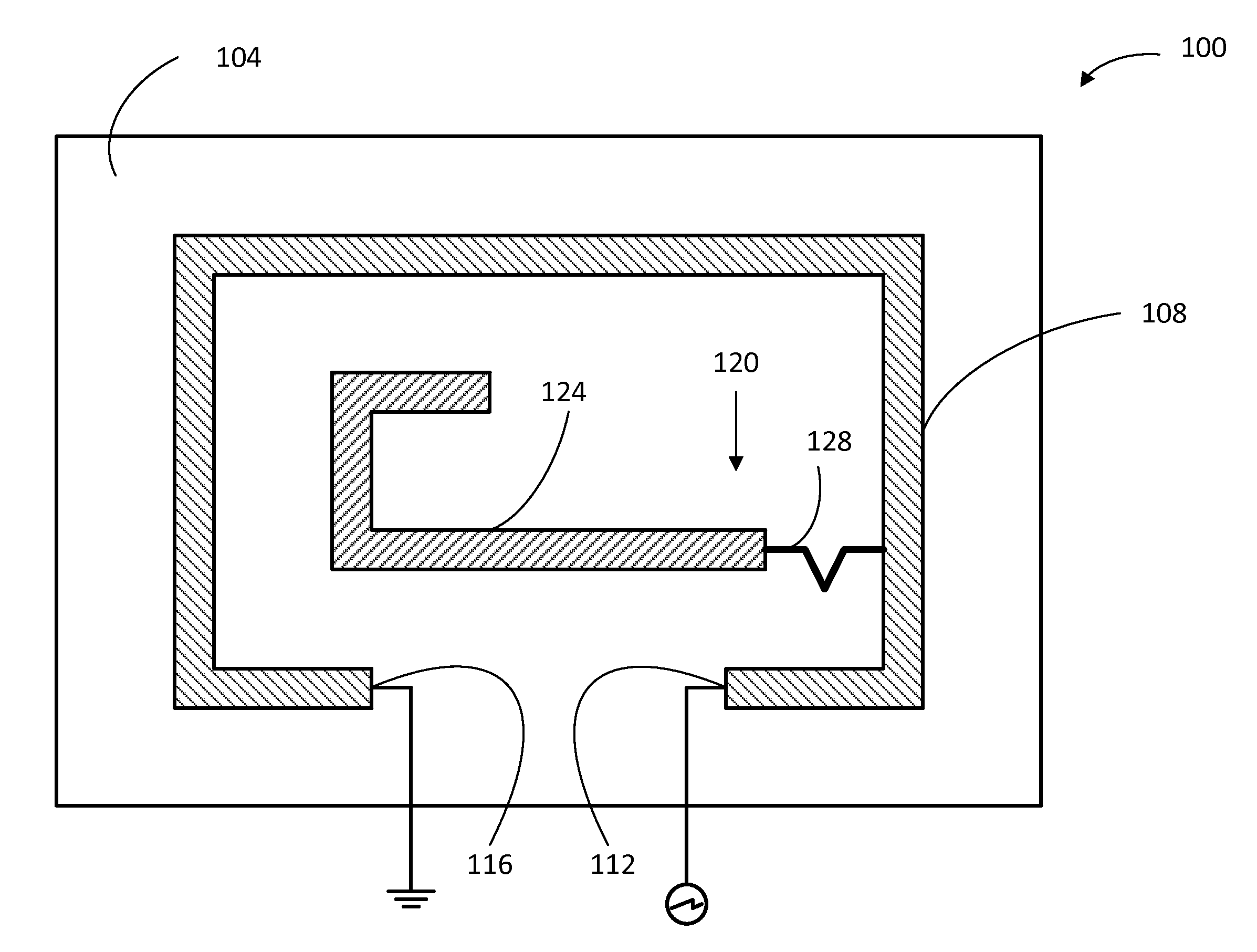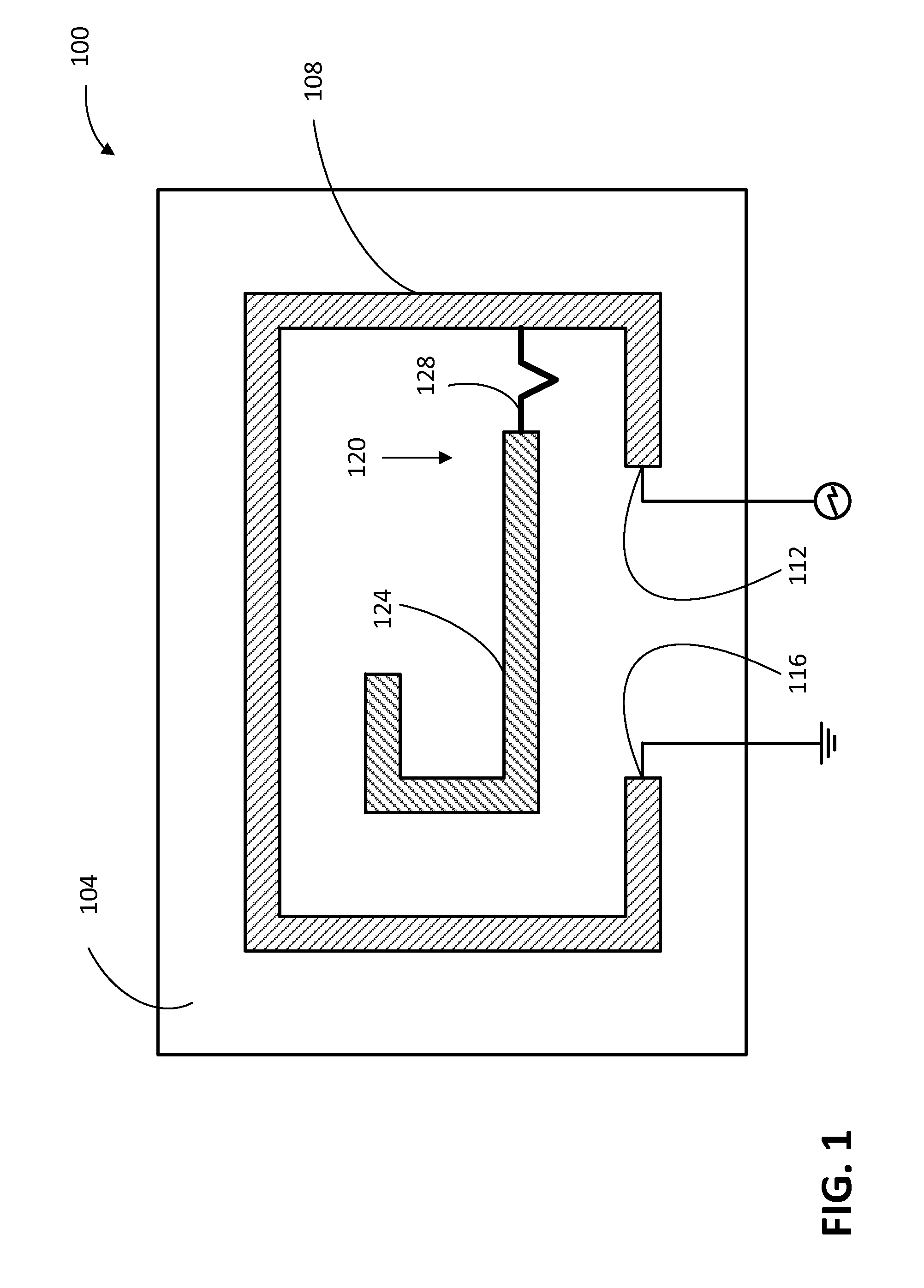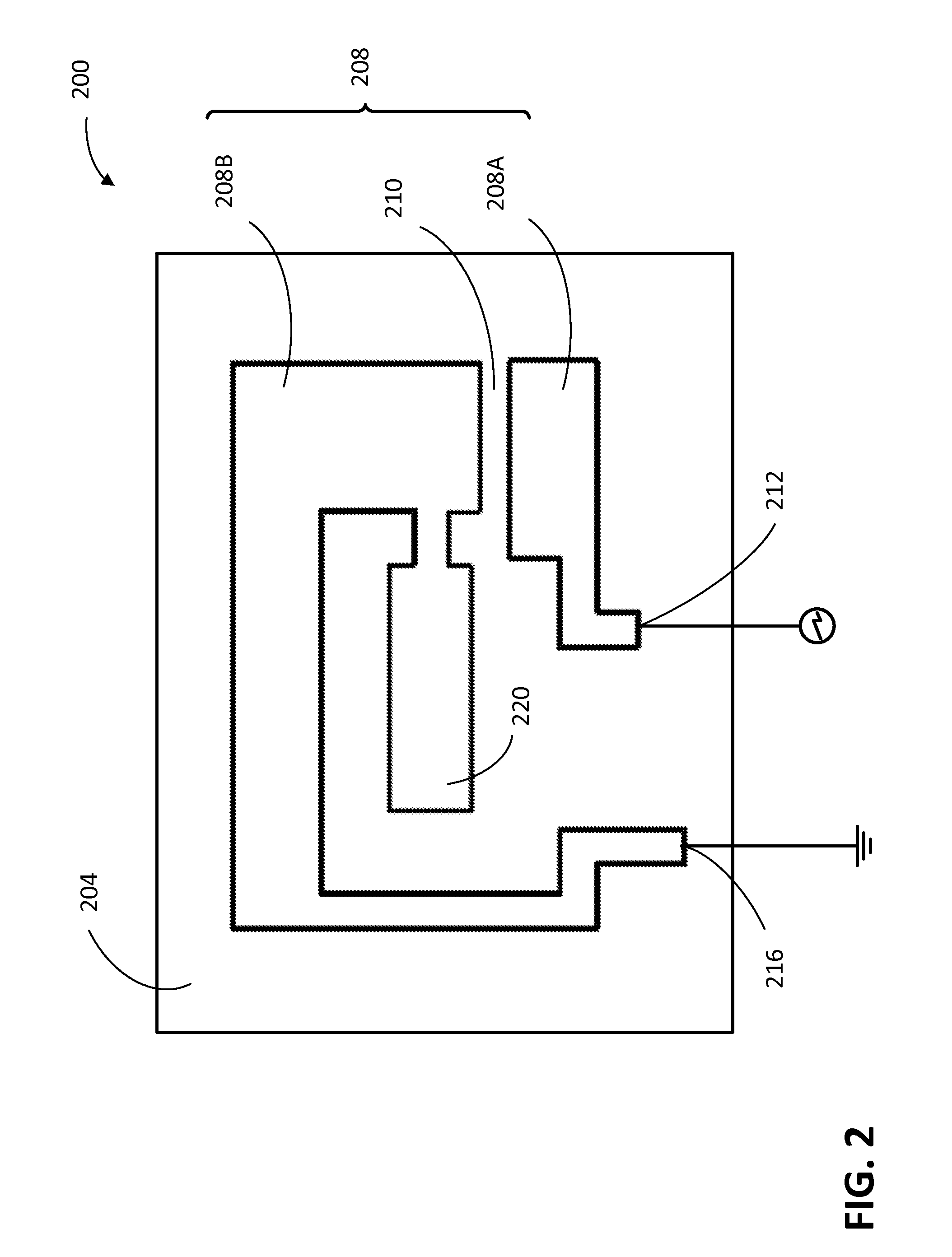Antenna system using capacitively coupled compound loop antennas with antenna isolation provision
a compound loop antenna and antenna isolation technology, applied in the direction of loop antennas, simultaneous aerial operations, electrical equipment, etc., can solve the problems of deteriorating transmission and reception quality, affecting the effective implementation of such antennas, and being unsuitable for transmitters
- Summary
- Abstract
- Description
- Claims
- Application Information
AI Technical Summary
Benefits of technology
Problems solved by technology
Method used
Image
Examples
Embodiment Construction
[0023]In view of known limitations associated with conventional antennas, in particular with regard to radiation efficiency, a compound loop antenna (CPL), also referred to as a modified loop antenna, has been devised to provide both transmit and receive modes with greater efficiency than a conventional antenna with a comparable size. Examples of structures and implementations of the CPL antennas are described in U.S. Pat. No. 8,144,065, issued on Mar. 27, 2012, U.S. Pat. No. 8,149,173, issued on Apr. 3, 2012, and U.S. Pat. No. 8,164,532, issued on Apr. 24, 2012. Key features of the CPL antennas are summarized below with reference to the example illustrated in FIG. 1.
[0024]FIG. 1 illustrates an example of a planar CPL antenna 100. In this example, the planar CPL antenna 100 is printed on a printed circuit board (PCB) 104, and includes a loop element 108, which in this case is formed as a trace along rectangle edges with an open base portion providing two end portions 112 and 116. On...
PUM
 Login to View More
Login to View More Abstract
Description
Claims
Application Information
 Login to View More
Login to View More - R&D
- Intellectual Property
- Life Sciences
- Materials
- Tech Scout
- Unparalleled Data Quality
- Higher Quality Content
- 60% Fewer Hallucinations
Browse by: Latest US Patents, China's latest patents, Technical Efficacy Thesaurus, Application Domain, Technology Topic, Popular Technical Reports.
© 2025 PatSnap. All rights reserved.Legal|Privacy policy|Modern Slavery Act Transparency Statement|Sitemap|About US| Contact US: help@patsnap.com



